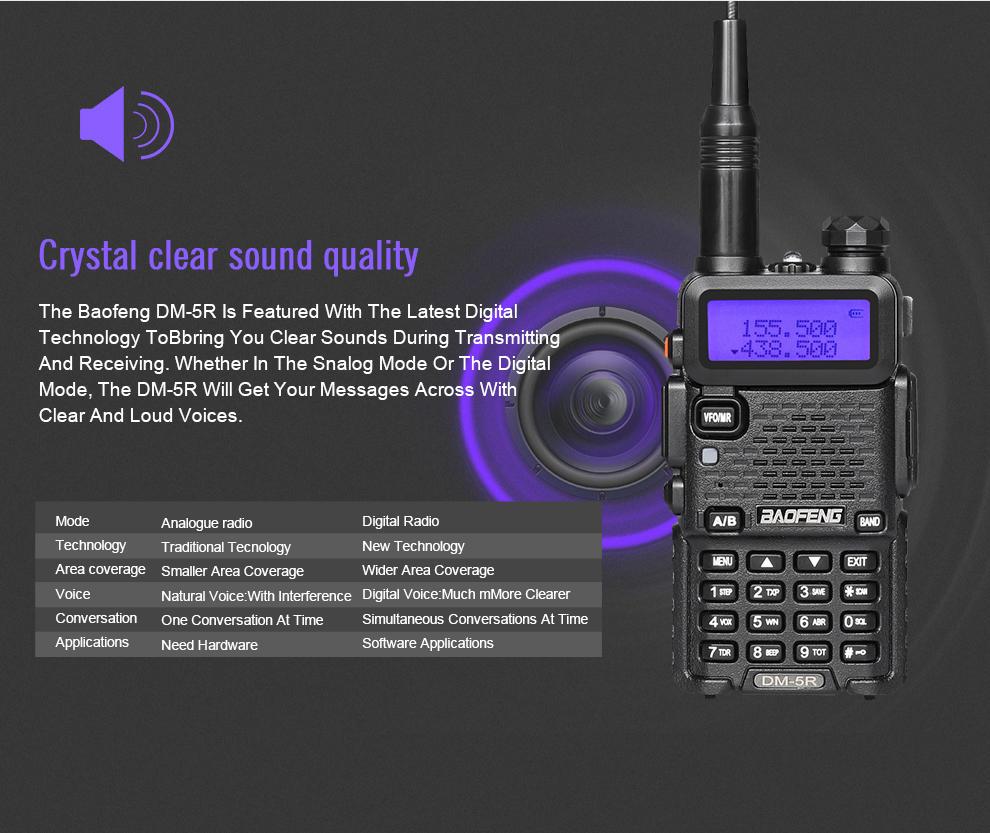When purchasing a walkie-talkie, you will find CTCSS, CDCSS, DCS, DTCS, QT, DQT, PL, TPL, and DPL in the function introduction… These are the sub-audio functions that represent the walkie-talkie. Then the question comes, how is the sub-tone of the walkie-talkie divided? How does the subsonic function prevent interference? Here is the answer for everyone.

Sub-audio refers to a technique in which a frequency lower than audio is added to an audio signal for common transmission. Since the frequency is below standard audio, it is called sub-audio. When there are multiple stations communicating on the same frequency, the subsonic technology can be used to prevent interference with radio stations that are not related to them. Difference: analog subsonic VS digital subsonic
There are many sub-tones, so how do we distinguish and use them? In fact, including CTCSS, CDCSS, DCS, DTCS, QT, DQT, PL, TPL and DPL, etc., are different titles of different brands and different manufacturers for sub-tones, in fact, sub-tones are digital sub-tones (DCS) and analog sub-tones. (CTCSS) two categories.
The more commonly used subsonics are analog sub-tones (CTCSS) with a total of 39 sub-sound points (or 50) with frequencies from 67.0 Hz, 69.3 Hz up to 250.3 Hz. When the analog subsonic transmission is performed, the signal that cannot be heard by the low frequency is continuously superimposed on the frequency to be transmitted, so that the other party can receive only when receiving the same frequency, thereby realizing anti-interference or refusing to listen to other third-party signals.
The digital sub-tone (DCS) has 104 sub-sound points, which are faster than the analog sub-tones and have a lower bit error rate, and can have more users in the same channel. The biggest difference between the two is that the digital sub-tone is digitally encoded as a condition for whether mute is turned on. Digital sub-audio coding is a binary signal that changes DC according to the sub-audio rate. The biggest difference between it and CTCSS is that it is transmitted every time. At the end, a 134 Hz tone is automatically issued as a “close code”, which is a way to suppress noise smearing.
In addition, since digital subtones are transmitted using digital encoding techniques before and before the end of the transmission, digital subtones can only be transmitted and received simultaneously (ie, cannot be set to transmit only and not received).
Sub-audio standard range and transceiver requirements
At present, the standard sub-tone rate range used by different types of walkie-talkies on the market is 67Hz-250.3Hz. A sub-audio point is set at intervals of 2 Hz – 3 Hz over the entire range to avoid the two sub-audio points being too close to affect relay station communication.
The reception and transmission of sub-audio are also strictly required. In general, sub-audio frequency stability error is less than ±1%, standard sub-audio single-tone bias: 0.5kHz±20%, standard voice offset: 3kHz, maximum frequency offset: 5kHz; single-tone squelch sensitivity: at the receiver It can work reliably when the output signal-to-noise ratio is 8db.
How to use the subphone function of the walkie-talkie to achieve anti-interference?
After understanding the relevant knowledge of the sub-sound, what everyone is most concerned about is how to operate the sub-sound function when actually using the walkie-talkie? In the actual operation, we take the Baofeng DM-5R digital machine as an example to introduce:

Ø Set by frequency writing software: channel folder → area → specific channel → receiving parameter setting decoding → transmitting parameter setting code
Ø Decoding: The intercom at the receiving end should decode the subsonic sent by the transmitter at the transmitting end. When the subtone set here matches the sub tone sent by the sender, the speaker is turned on and the voice is output;
Ø Coding: The transmitter at the transmitting end encodes the sub-tone before transmitting the voice, and the additional encoding on the voice is transmitted through the carrier. When the receiver receives a match with the subtone set here, it turns on the speaker and outputs the voice.
Many people have a misunderstanding: when transmitting a sub-tone, the receiver can only receive it if it is set to receive the sub-tone. ? In fact, the opposite is true. When the sub-tone is transmitted, the receiver is set to “non-sub-sound receiving state” and can be received. When it is set to “sub-tone receiving state”, the sub-tone type must be consistent and the sub-tone code must be consistent to receive.

Finally, tell everyone a little trick:
Since the subsonic is set at a high limit (near 250 Hz), or the receiver’s low frequency time-frequency response is better. Therefore, when setting the subtone, we can set it lower as much as possible to avoid unnecessary interference.







